Dining on the Wine Trail: Saint Romain Coffee Company
Meet American artist-turned-roaster Matt McClune, who turned sleepy Saint Romain into Burgundy's lone coffee destination.
Tucked in a former butcher shop on a backstreet of the village, Saint Romain Coffee Company is the creation of multi-talented Massachusetts-born artist Matt McClune, who followed parallel interests in wine and the European art scene to Burgundy in 2004, and has resided there ever since.
McClune credits his erstwhile Saint Romain neighbor, the négociant Jean-Pascal Sarnin, with introducing him to natural wine in the mid-2000s. Today, McClune’s fellow Burgundy-based coffee geeks (and biggest supporters) include Christian Knott of Domaine Dandelion, Jon Purcell of Vin Noé, and Andrew Nielsen of Le Grappin.
I caught up with McClune recently in Burgenland, where he’d come to provide coffee at a lunch event at Gut Oggau, and back in Burgundy, at his shop, to learn more about his unusual route to becoming the region’s finest (only serious) artisanal roaster.
Quick Facts
Before opening in March 2021, McClune sought advice and training with Christophe Servell, of Paris roasters Terres de Café, and roasting consultant Michael de Renouard in Copenhagen.
At Saint Romain Coffee Company, McClune sources exclusively organic Ethiopian coffees, and takes an experimental approach to coffee conditioning, inspired by his interest in wine and cider fermentation.
The shop is open Mondays and Tuesdays, from 9am-6pm.
In addition to his careers as an artist and a roaster, McClune also plays bass in local Burgundy band The Auxey-Morons, alongside négociant Chris Santini.
MATT MCCLUNE OF SAINT ROMAIN COFFEE COMPANY: AN INTERVIEW
This interview was conducted on June 13th, 2022. It has been condensed and edited for clarity.
What inspired you to open a coffee company in Burgundy?
MATT MCCLUNE: The project started in March 2020, during the confinement. At first I thought we’d do it for us and our friends. Just to see if I could do it. The idea grew and grew. I took it seriously, and did training in Copenhagen and Paris. And a year later I opened up the doors with production with the Loring coffee roaster.
To roast coffee in Burgundy, I thought there should be a respect for what this place is already. Pinot noir, for a lot of people, is a light red wine that’s really expressive of its terroir. I thought: let’s do that with coffee.
How do you select your coffee?
It’s only Ethiopian, only certified organic. Then from there, I try to understand everything that’s interesting that’s happening in Ethiopia. Everything that’s environmentally good, and good for the social situation. And expressive of terroir in different ways.
A bunch of years ago, when we started getting into natural wine, and it was more controversial around here, people were asking, in terms of expression of terroir, does natural wine give an incorrect expression of terroir, or a more correct expression of terroir? I think that question is still interesting. And it can absolutely be used in terms of coffee. I love that idea.
Like, carbonic maceration might give more of a bubblegummy fruit in the coffee. Fun! Let’s see what we can do with it.
How would you describe your own approach to roasting coffee?
I thought it would be good to learn the best Nordic roast. It’s a super bright style; the emphasis is on the fruit or floral attack. So I contacted the head judge for the Nordic roast competitions and asked who would be the best person I could train with? And I trained with him. He’s a master roaster, who trains on a Loring.
It was a great experience and I learned a hell of a lot really quickly. But bringing a Nordic roast to Burgundy was a bit challenging. I realized that in Scandinavian countries, there’s even less sun than here. So their palate is used to even higher acid in fruit. With that in mind, I thought, how can we calibrate for Burgundy level acid balance? What would be the roast level that would make sense in Burgundy?
So I’ve been taking baby steps over the last year to go from Nordic roasts, to figuring out how to get enough softness, so we still have the volatile floral fruit, but also enough sweetness?
For example, natural unwashed coffees have a tendency to oxidize more, and their fruit kinda fades. So what I’m starting to do is, as soon as I receive the green coffee, I put it in airtight containers with nitrogen. So I’m flushing out the air. It was Christian’s [Knott, of Domaine Dandelion] idea.
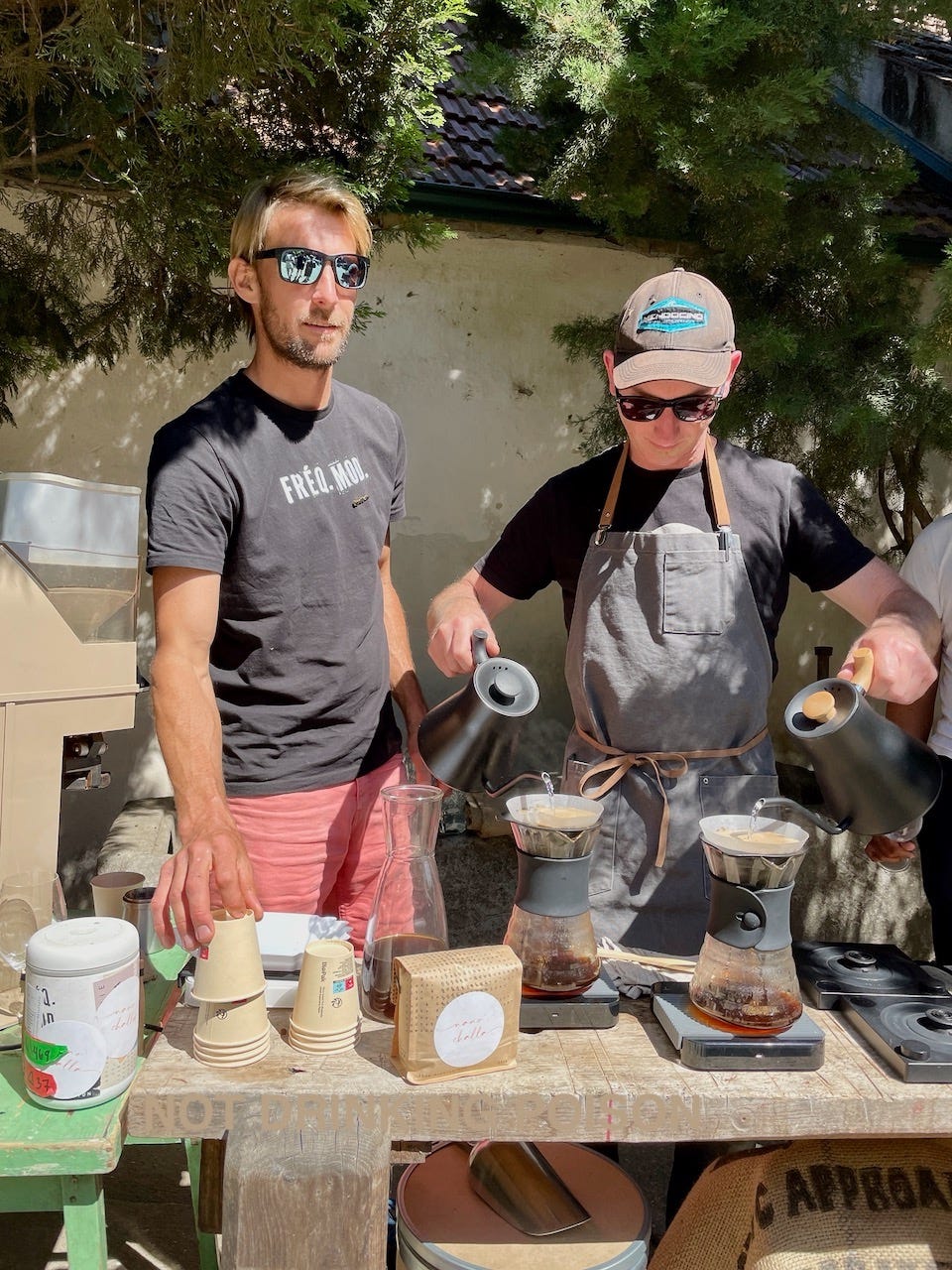
Have you always been into coffee?
I worked with almost all of Barbara Lynch’s restaurants in Boston in the late 1990s and early 2000s. So I got into coffee and wine then. I remember I was super excited when the coffee guy first came and gave us the training on how to use the espresso machine.
At the time, we all had this romantic notion of Burgundy being the epicenter of really old-school, simple terroir expression, whether you’re talking about cheese or chicken or certainly wine. So I came over for harvest in 2001 to understand more, and I was really let down. I was working with an American guy iI knew who was a négociant in Beaune. 2001 was a shitty vintage and in the supermarkets they had pallets of sugar sacks, and every day on our way to work we were instructed to buy sugar. I was like, “C’mon man, this is supposed to be pure!”
So nowadays, finally, with all our friends here, I wound up discovering the Burgundy that I was looking for twenty years ago.
FIN
Saint Romain Coffee Company
28 Rue de la Tartebouille
21190 SAINT ROMAIN
Open Mondays and Tuesdays from 9am - 6pm.
FURTHER READING
My friend Alice Feiring recently featured Matt McClune and Saint Romain Coffee Company in The Feiring Line.
Meet The Auxey-Morons (the band in which McClune plays bass)
A March 2021 article on the opening of Saint Romain Coffee Company in Le Bien Public.
An interview with Michel de Renouard at the Loring website, on how to become a successful coffee roaster.

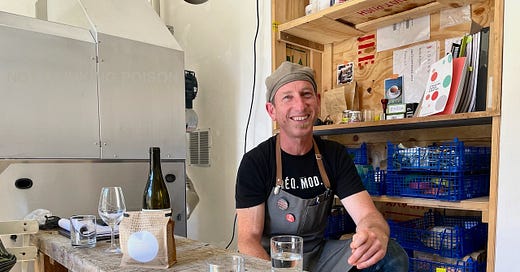



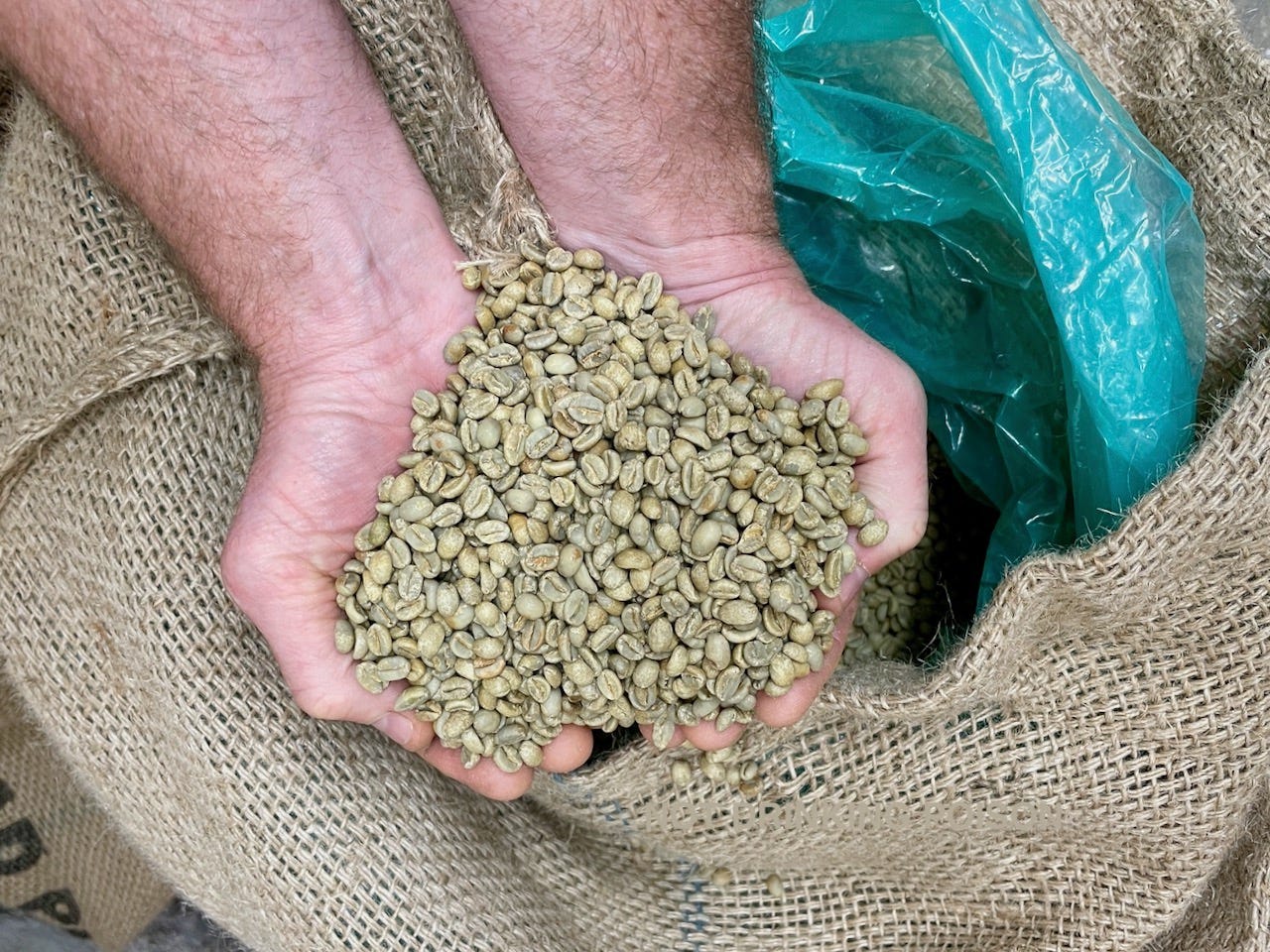
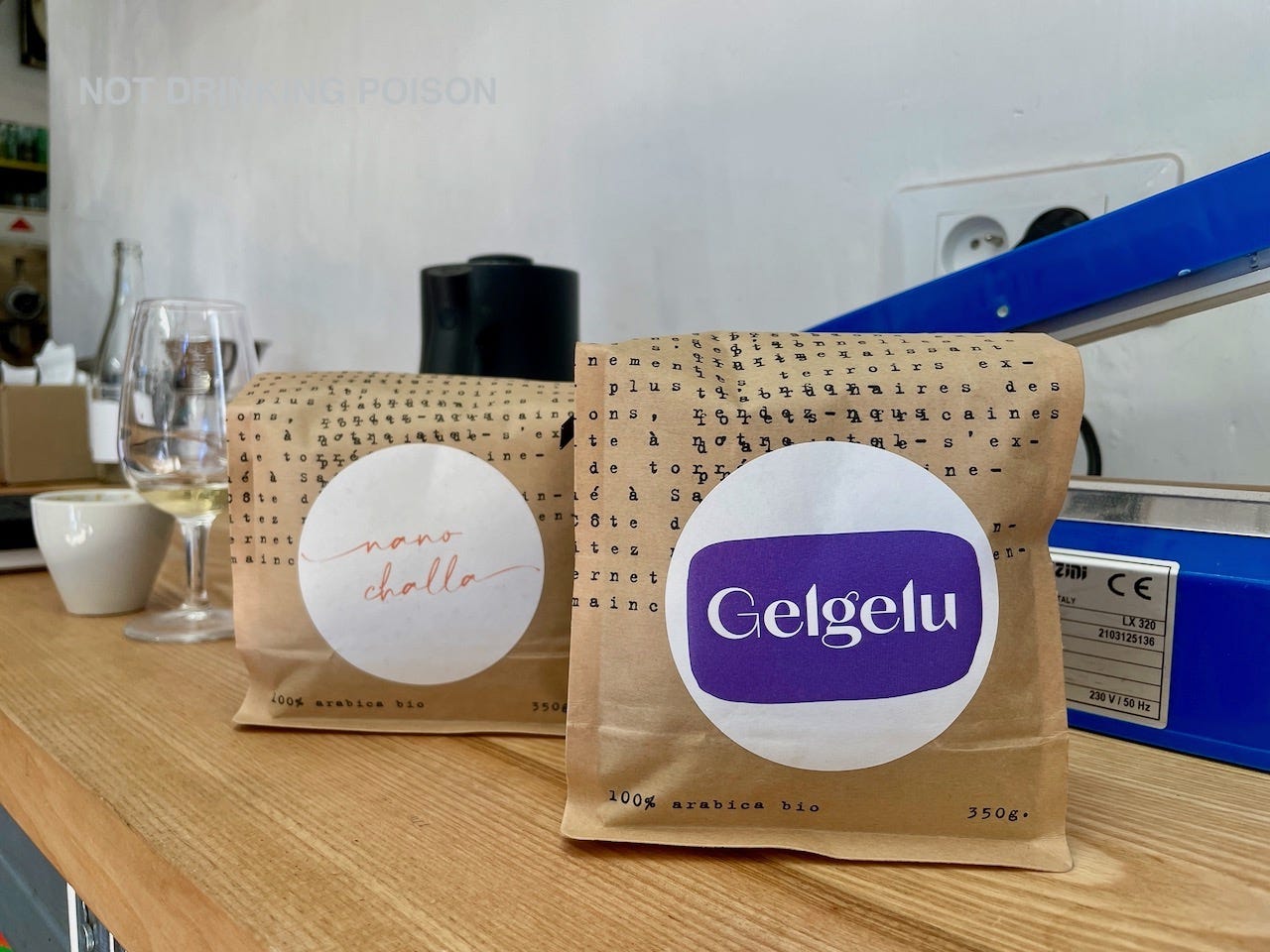
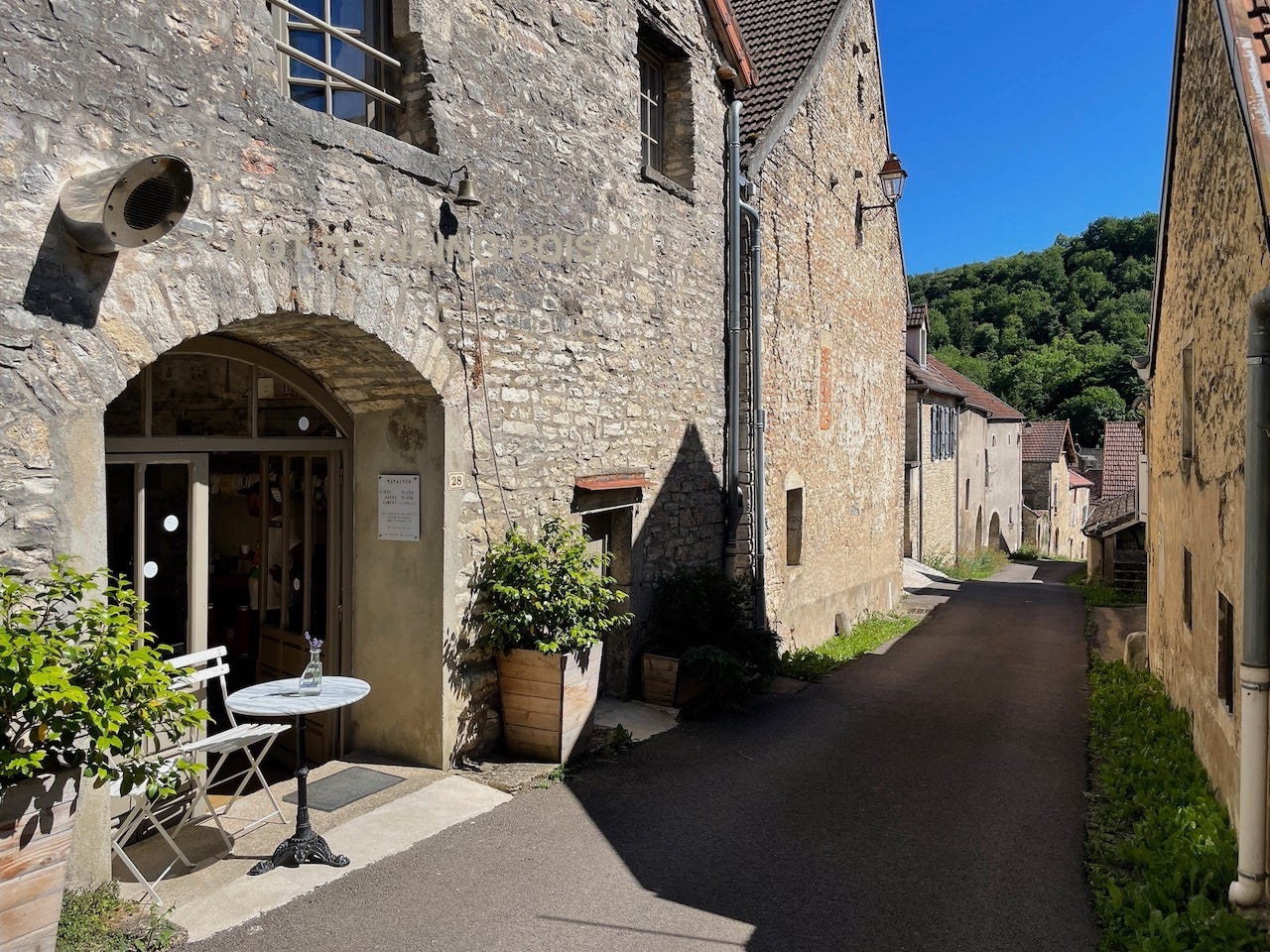
Calibrating coffee to a Burgundian palate: fascinating!